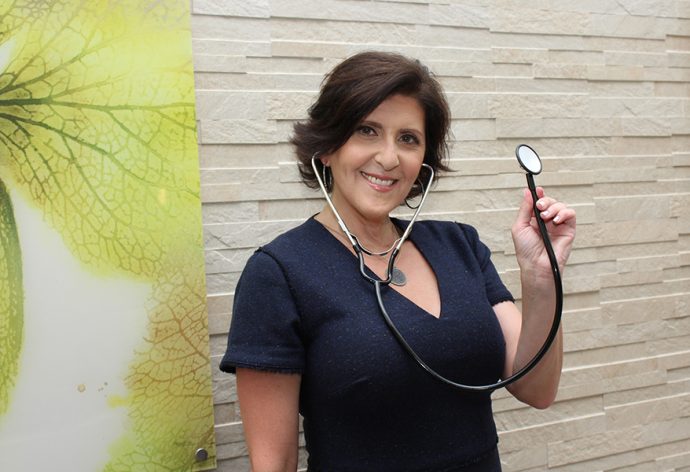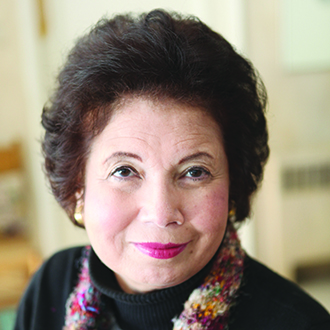By now, the word is out. There’s a new and growing tick-borne disease called Powassan that is spreading across the U.S.
“It is still rare, but worrisome, because it is not the same old Lyme,” says Dr. Tania Dempsey, who has an office in Armonk. “And to make things even more complex, victims of traditional Lyme disease and those infected with the new Powassan virus can also become co-infected with the Bartonella bacteria, also carried by ticks.”
Dempsey is a specialist in Lyme disease, autoimmune disorders, co-infections and a number of other related conditions, including mast cell activation syndrome, which can produce anaphylaxis or near-anaphylaxis attacks. She is sought after for her knowledge of chronic immune problems and uses integrative medicine to get to the root causes of her patients’ illnesses.
“Patients come to me from all over the world who cannot get a definitive diagnosis from other doctors,” she says. “As an expert in ‘mystery illnesses,’ I focus on the story behind the symptoms.”
NEW VARIETIES OF LYME DISEASE
Dempsey says the different type of Lyme disease, especially the dangerous new strains, can fall into the category of mystery illnesses, with patients experiencing a multitude of symptoms that overlap over disease syndromes and can be confusing, debilitating and frightening.
“If you have the classic Lyme disease bull’s-eye rash, you are among the lucky minority,” she says. “Most patients have a much more difficult time with a diagnosis.”
She adds that there are lots of different ticks that transmit different types of infections. The biggest culprit of transmission, the deer tick, is the most familiar and people know that it can cause significant illness.
But the new virus now being transmitted through the tick, the Powassan virus, is of much greater concern, though it is just starting to gain traction in the Northeast. It is transmitted much more quickly than traditional Lyme disease — taking as little as 15 minutes — and can be fatal, causing meningitis and a brain inflammation known as encephalitis.
“It also attacks the heart and central nervous system, and symptoms are varied — hot flashes, night sweats, heart palpitations, nausea and abdominal pain,” Dempsey says. “ Many of these infections cause symptoms that overlap and are not specific.”
A wide variety of viruses are now being transmitted through ticks. Individuals infected with the Powassan virus have a mortality rate of 15 percent and at least 50 percent will have long-term neurological damage. There is no treatment, only supportive care.
According to the Centers for Disease Control and Prevention, the number of cases of Powassan is expected to increase as more and more deer and ticks become infected.
And if Powassan isn’t bad enough, Dempsey says Bartonella, first reported in 1990, is now becoming an increasing threat, particularly on the global stage.
“Bartonella is carried by ticks and other insects, including flies and even dust mites. It can be spread in so many ways, including scratches by cats; that it is amazing,” she says.
“In the early days it used to be known as Cat Scratch Fever, but it is now way beyond that old label. Patients infected with the Bartonella bacteria report more neurological symptoms than traditional Lyme sufferers, including blurred visions, numbness in the extremities, memory loss, balance problems and tremors. It is a very dangerous co-infection.”
A PRACTICE WITH A HEART
Dempsey knew she wanted to be a doctor when she was 5 years old.
“My maternal grandmother worked as a nurse/field doctor during World War II in Russia,” she says. “When I was growing up, she used to tell all these fascinating stories about the war and how she helped soldiers who were injured and sick people in villages. I was very close to her and always had this connection to who she was. I always wanted to be like her and help people.”
In this, Dempsey was fully supported by her parents and she went on to get her medical degree from the Johns Hopkins University School of Medicine.
After completing her residency, she struggled to reconcile her feelings about treating the “whole patient’ with the scientific/traditional approach to medicine that is ingrained in the medical system.
“It became clear that things like nutrition and lifestyle were not considered that important for understanding a patient’s illness so my medical training was all about technologies and the latest cutting-edge scientific advancements. I was almost embarrassed to admit that I was more interested in what was considered ‘pseudoscience’ back then.”
As Dempsey joined different medical groups, she became unhappy with seeing patient after patient fail after receiving traditional therapies for many common diseases and complaints.
“I grew very frustrated as time went by and began doing my own research on the root causes of the epidemic of diseases I was seeing on a daily basis. I began applying this information to patients and their conditions and saw positive results. More importantly, my patients started seeing positive results. What I didn’t realize at the time was that I was practicing ‘integrative medicine.’”
By 2011, Dempsey was ready to take a leap of faith and leave the comforts of being a salaried employee at a large multispecialty practice to start Armonk Integrative Medicine on her own.
“It was almost unheard of for a doctor to start a solo practice, but I did it and have become successful. When I first left the practice I was working at, I had a handful of patients who wanted to follow me. The momentum kept building until today I have a caseload of 1,000 and a waiting list of 250.”
Dempsey — who lives in Armonk with her husband, Steve, and their three children — says she is happy to announce that Dr. Lawrence Afrin, a leading authority on mast cell activation syndrome, has joined her practice. He will begin seeing patients in September.
“I plan to keep on running my practice with my heart. I urge anyone with a set of ‘mystery symptoms,’ be they Lyme-related or something else, to seek help when the traditional approach fails. Sometimes the ‘mystery’ is not so mysterious after all but just requires stepping aside from the traditional approach and moving to the holistic.”
For more, visit drtaniadempsey.com.


